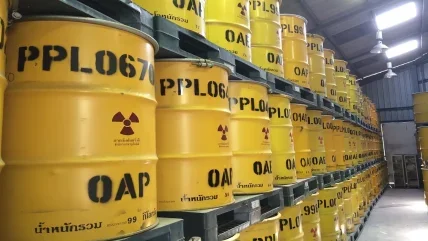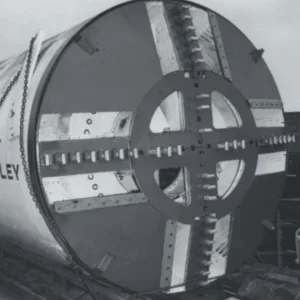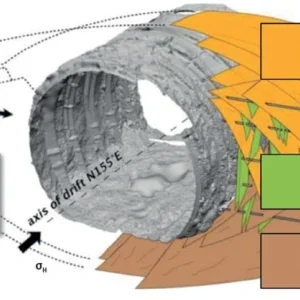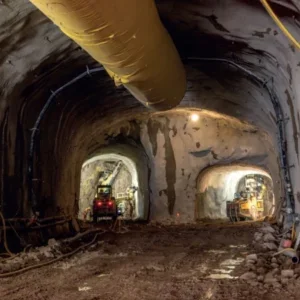
Nuclear technology has been part of our lives for over 60 years. It provides a substantial proportion of global low-carbon electricity and is used across industry, medicine, and defence. And, if the industry’s ambitions are realised, we will soon come to rely on it even more as a source of energy for the years to come. As a result of these activities though, we have a legacy of radioactive waste, some of which we need to continue to manage safely today and for the thousands of years that it will remain a hazard. Delivering a safe, secure, and permanent solution for this higher-activity radioactive waste represents one of the most significant challenges and opportunities of our time; its complexity underlined by the wide range of engineering and technical expertise required. Development of a Geological Disposal Facility (GDF) is the only viable, internationally accepted solution to managing the most radioactive waste in the long term. This underground facility, which is designed to dispose of radioactive waste in highly engineered vaults and tunnels deep underground, will be housed within suitable geology potentially hundreds of metres beneath the surface.
Nuclear technology has been part of our lives for over 60 years. It provides a substantial proportion of global low-carbon electricity and is used across industry, medicine, and defence. And, if the industry’s ambitions are realised, we will soon come to rely on it even more as a source of energy for the years to come. As a result of these activities though, we have a legacy of radioactive waste, some of which we need to continue to manage safely today and for the thousands of years that it will remain a hazard.
Delivering a safe, secure, and permanent solution for this higher-activity radioactive waste represents one of the most significant challenges and opportunities of our time; its complexity underlined by the wide range of engineering and technical expertise required.
Development of a Geological Disposal Facility (GDF) is the only viable, internationally accepted solution to managing the most radioactive waste in the long term. This underground facility, which is designed to dispose of radioactive waste in highly engineered vaults and tunnels deep underground, will be housed within suitable geology potentially hundreds of metres beneath the surface.
As an indicator of the sheer scale of this challenge, the UK is expected to have more than 4 million cubic metres of waste to recover and treat to complete the national decommissioning programme, with over 770,000 cubic metres of higher activity waste ultimately destined for a GDF.
While radioactive waste can be safely stored above ground, these facilities require ongoing maintenance and need replacing every 50-100 years. Investing in a GDF now removes these issues entirely, offering a permanent solution for the thousands of years it takes for radioactivity to naturally decay.
Development of a GDF has been part of government policy to manage radioactive waste in many nations. In the UK it has been an explicit policy since 2006, for example.
A GDF also represents a substantial infrastructure project. Developing such a facility in the UK comes with an expected cost range of £20-53bn and will span around 175 years. A GDF could offer unique opportunities for generations of engineers.
The diversity of skills and level of resource required will test our engineering sector. As a multi-disciplined project, developing a GDF needs a team that spans management, science, technology, engineering, mathematics, sustainability, and environment, to name just a few.
This range of skills means that a GDF is not solely a challenge for the nuclear sector. The range of work on offer, coupled with resource issues, mean that the nuclear industry must be open to the transfer of skills between sectors – taking inspiration from the mining, rail, highways, and industrial sectors too. As well as ensuring effective delivery, this promotes knowledge building, access to a breadth of solutions, and ultimately more inspiring careers for future engineers.
FUTUREPROOFING THE GDF APPROACH
Futureproofing is at the heart of a GDF project with the development process perhaps spanning 175 years or more. Coupled with maintaining engagement over this period, transfer of knowledge must be managed in a sustainable and robust way. In an evolving digital world, where the art of the possible frequently changes, this is a significant challenge. The way we do things today may evolve and change, so the design of a GDF needs to factor in emerging technologies, while robustly maintaining the safety and integrity of the facility.
Nuclear is a learning sector, constantly evolving and adapting to conditions and hazards that some would consider extremely challenging. This flexible approach will be put to the test with the development of a GDF and it is possible that building a disposal area could be at a scale few engineering projects have seen in the past with an estimated 400km of tunnelling such a project would match the length of the London Underground.
These are just a handful of the complex technical challenges associated with a GDF, but the most pressing matter today is identifying a location. A suitable geological setting is an essential factor as is gathering information about geology that is relevant to the safety of a GDF.
Potential sites will require detailed investigations which are likely to take around 10-15 years.
Equally important is engagement and working in partnership with communities. UK government policy states that a GDF will only be built where there is a suitable site and a willing community. The prospect of a nuclear waste disposal facility on the scale described above is understandably daunting and there is historic cynicism surrounding the industry.
Identifying the location for a GDF is a structured process with the local community at its heart, who will have to give their consent before any development can go ahead. A dialogue within four communities across Cumbria and Lincolnshire has already been established in the UK in the form of Community Partnerships, to explore whether hosting a GDF might be right for them.
These communities are already experiencing some very early benefits of a potential GDF. Once a Community Partnership is established, investment of up to £1 million a year is injected into the local community. In the long term, enhanced infrastructure is likely to be required, leading to improvements at a local and regional level. A GDF is projected to create more than 4,000 jobs within the first 25 years alone, and these roles will bring a huge economic stimulus to whichever community agrees to host a facility.
However, the use of nuclear technology can be contentious and, despite the economic advantages, there will always be safety concerns. That is one reason why community engagement is so important to allow people to find out more for themselves. Understandably, people want to feel assured that facilities are safe now and that future generations are also not put at risk.
The UK is among more than 20 countries at different stages of GDF consideration and development around the globe, including Sweden, Finland, Switzerland, and France. Scientists see a GDF as best to keep higher activity radioactive waste safe and secure.
As with all major infrastructure projects, the environmental impact is also a concern. The commitment from the UK government and the nuclear sector more generally is that a GDF will not only deliver the safe disposal of waste that would otherwise remain vulnerable to environmental and societal changes over very long timescales above ground, but also enhance the local environment. This ranges from protection of farmland to enhancement of biodiversity, with sustainability being built into the core of this project.
Developing a GDF is undoubtedly one of the most ambitious and complex engineering projects of our time. Before we even begin to tackle the technical issues we face a challenge to overcome the questions, concerns, and misperceptions of nuclear waste across communities. The nuclear industry has a rich history and several regions have experienced the benefits that it can bring. So, while the hurdles may seem high, a GDF has the potential to unlock economic, environmental, and engineering opportunities for generations to come.







